The raucous Hyundai Ioniq 5N EV has the sound and feel of an old school sports car
Hyundai is an unlikely saviour of the sporting EV, finding new ways of transforming the sheer power of electrification into an engaging, albeit old school, driver’s car
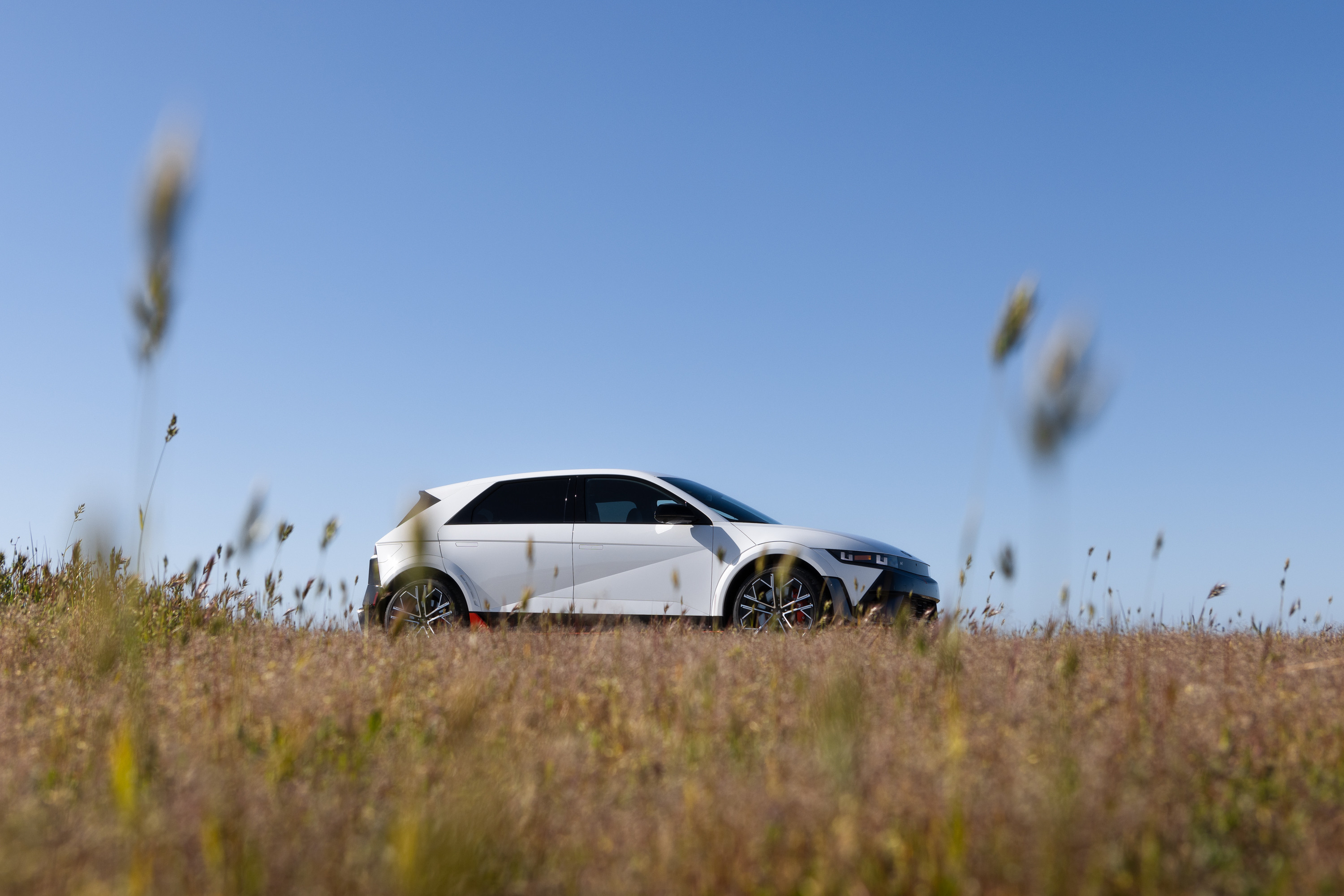
Whilst there’s still a relative dearth of ‘true’ electric sports cars, there’s no escaping the fact that even modest-looking EVs can pack a performance punch equivalent to or exceeding ICE-powered supercars. Even though the clear advantages of electrons haven’t put paid to the so-called horsepower wars, there are still those who feel that EVs deliver their superior firepower with a complete lack of character – an absence of sound and fury, if you like.
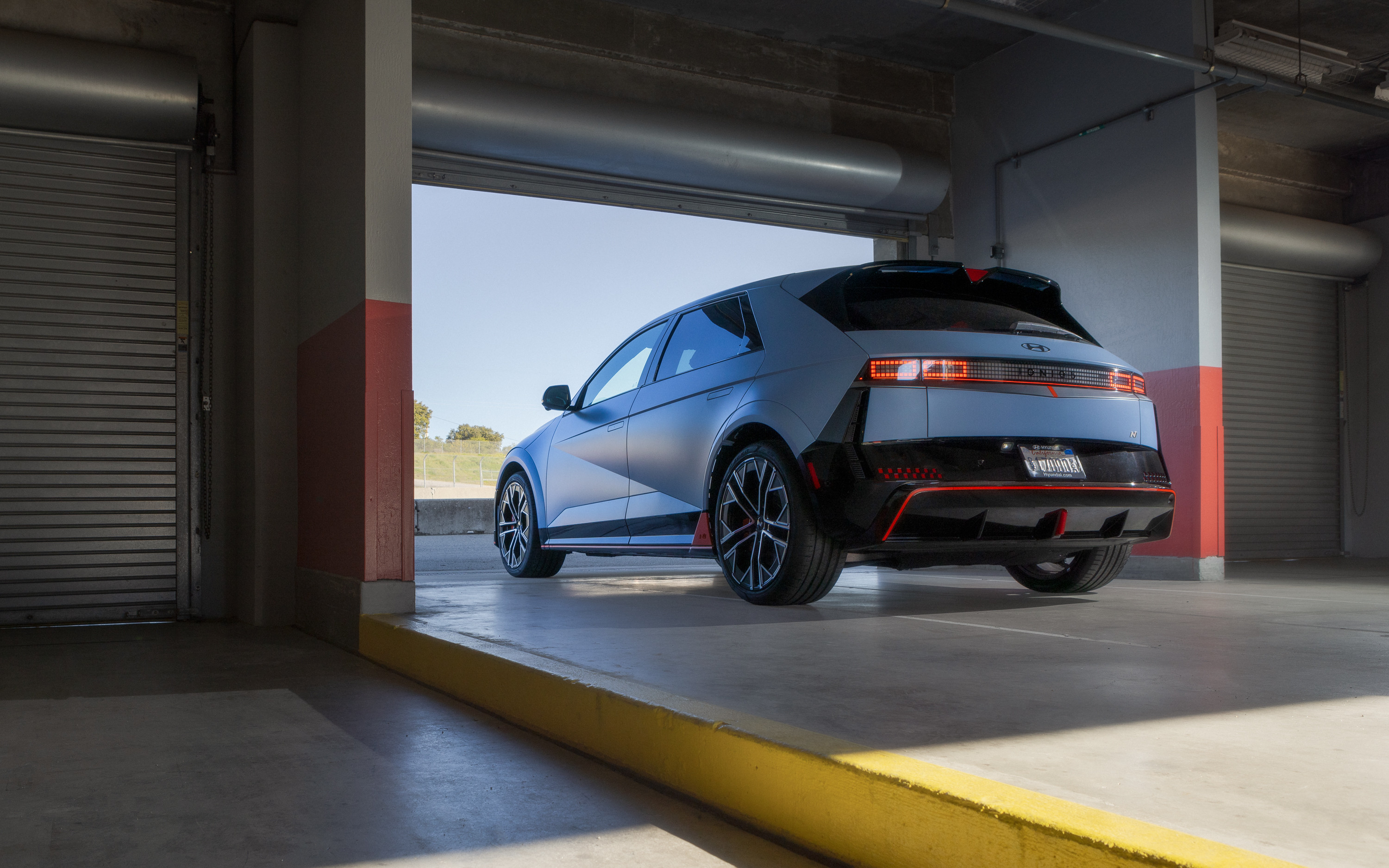
The Hyundai Ioniq 5N is best experienced on a track
That’s where the Hyundai Ioniq 5N comes in. Hyundai has been building ‘N’ badged cars since 2017, when the humble i30 hatchback was boosted and bolstered by all sort of engine and dynamic upgrades. Simultaneously, the company doubled down on its official racing activities, entering and winning the World Rally Championship manufacturers’ title in 2019.
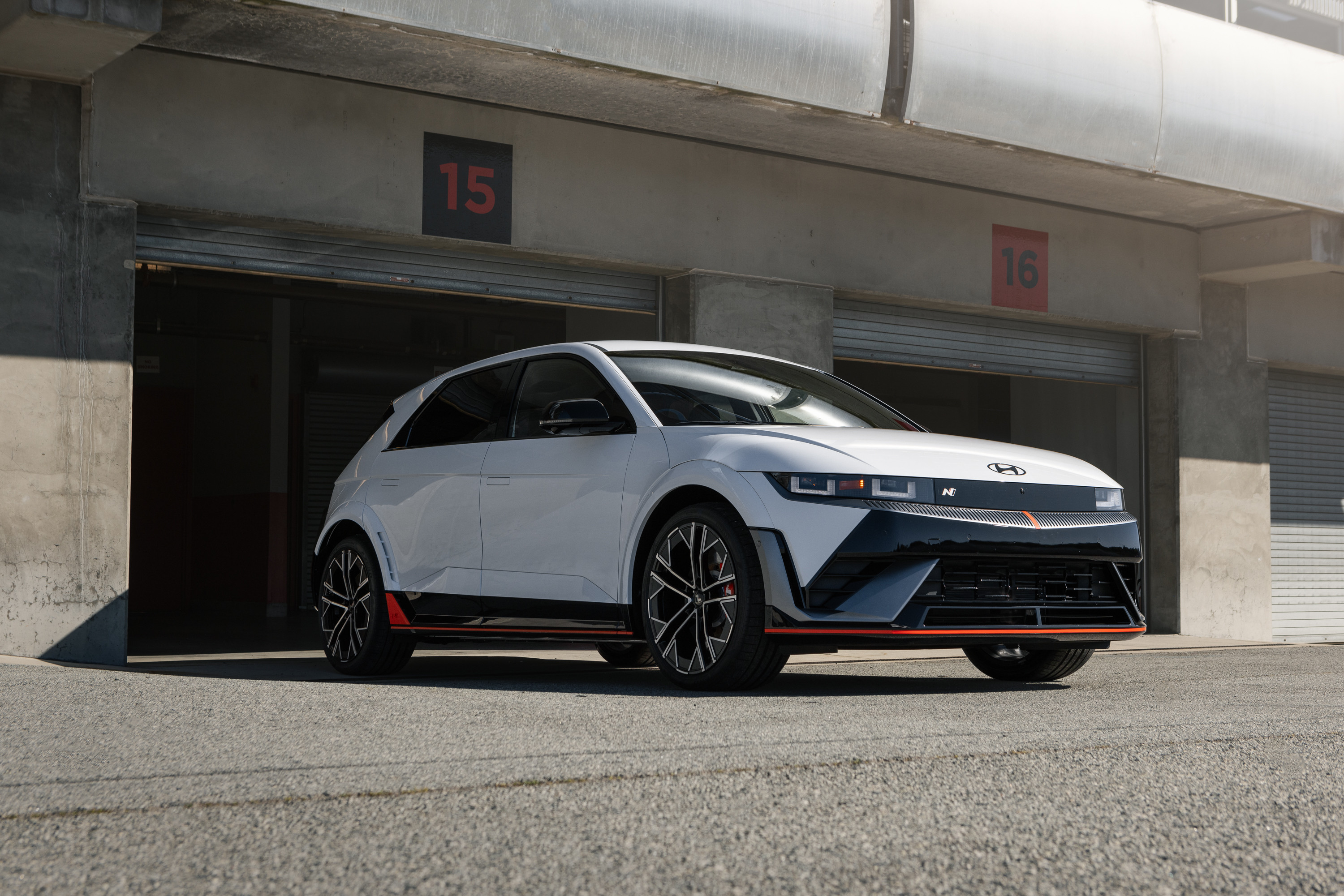
Hyundai Ioniq 5N
The i30N was followed by the Veloster N, i20N, Kona N and Elantra N, but it wasn’t until 2023 that the idea of creating a pure electric ‘N’ car was mooted. That car was the Ioniq 5N, a thoroughly transformed Ioniq 5 hatchback with a clutch of new technologies designed to improve driver engagement. The 5N subsequently won a clutch of awards from a grateful automotive press, most of whom had begun to doubt that an EV could ever match up to the dynamic dreams.
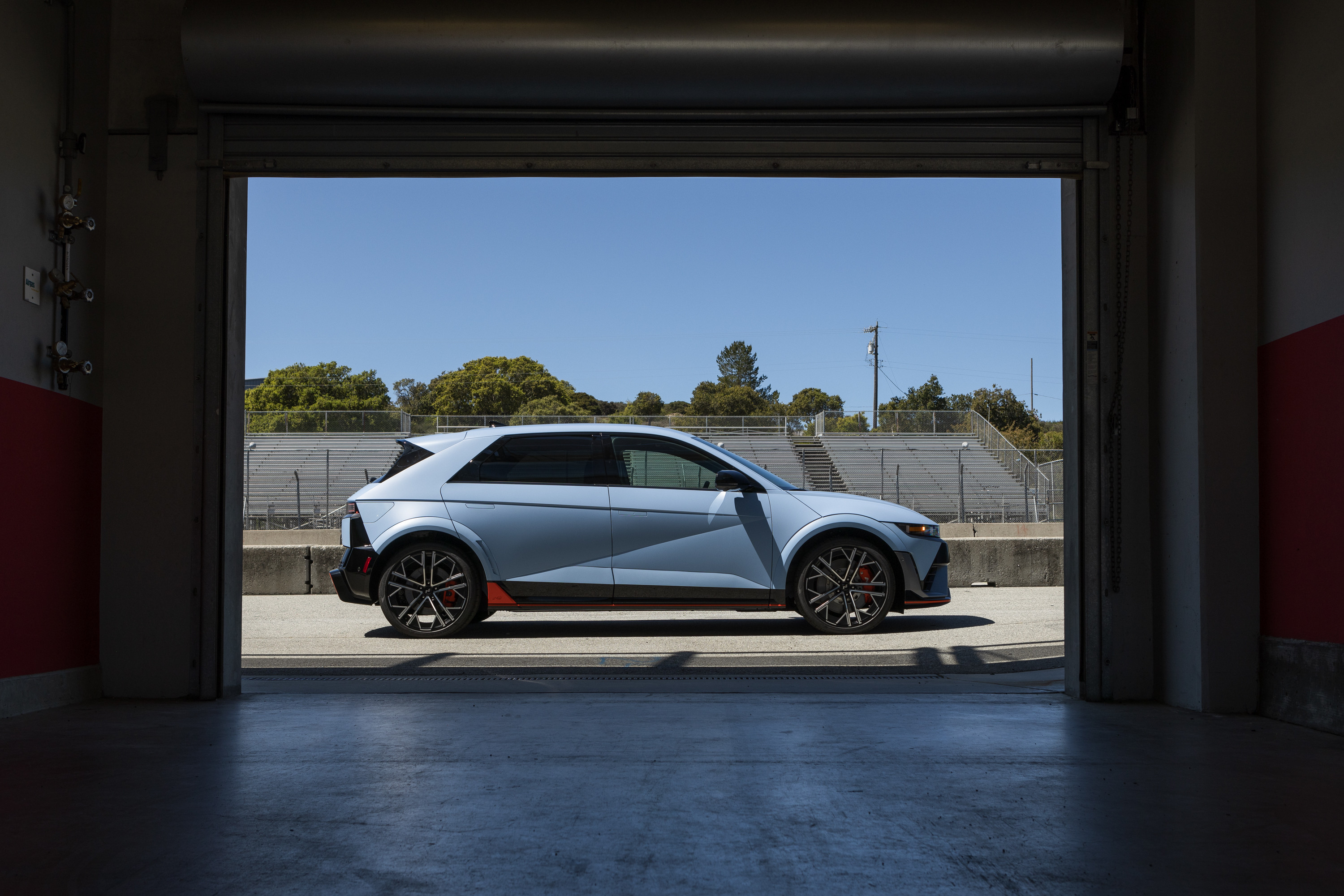
Hyundai Ioniq 5N
So what is it like to live with? The original Ioniq 5 was already an accomplished EV. Large and heavy (although it looked smaller), it deployed Hyundai’s faceted new edge styling and pixel graphic lighting to great effect. In ‘N’ configuration, changes aren’t limited to drivetrain and software, but also to the way it looks, inside and out.
There’s a clear sporting bias in the racing seats, the subtle flashes of signature ‘N’ ‘luminous orange’ trim, and a body kit and rear spoiler that adds more edge to the already razor-sharp corners of the design.
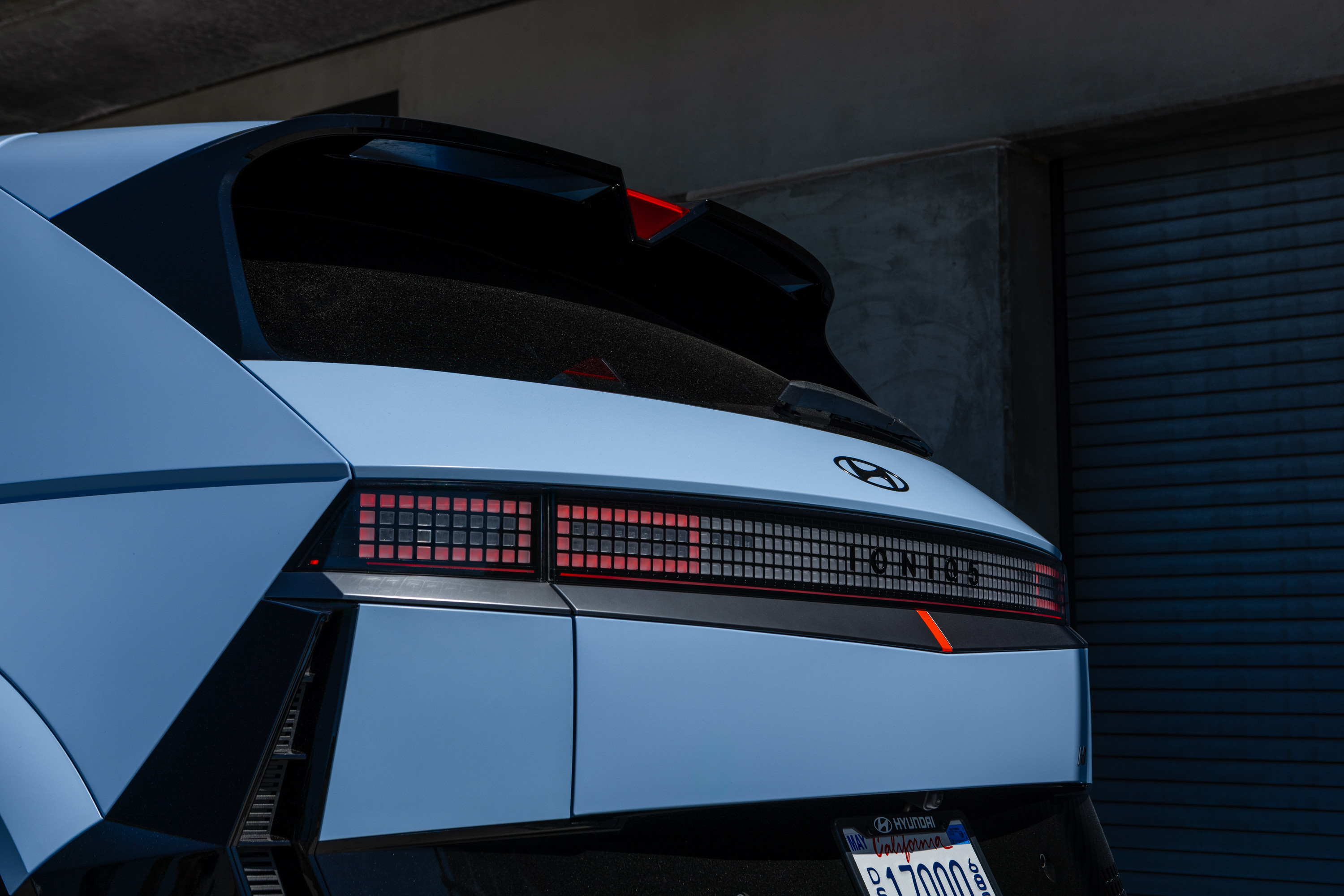
Hyundai Ioniq 5N
Inside, in addition to the leather and Alcantara bucket seats, set in a slightly lower, more sporting seating position, there are also clever software tweaks that get more out of the EV powertrain.
The most immediately obvious change is the pairing of Hyundai’s N Active Sound+ with the N e-shift function. This effectively simulates a manual dual-clutch transmission. Using the steering wheel-mounted paddles to ‘change gear’, the Ioniq 5N does a fine impression of a roaring engine, pitch rising and falling with each click on the paddle.
Receive our daily digest of inspiration, escapism and design stories from around the world direct to your inbox.
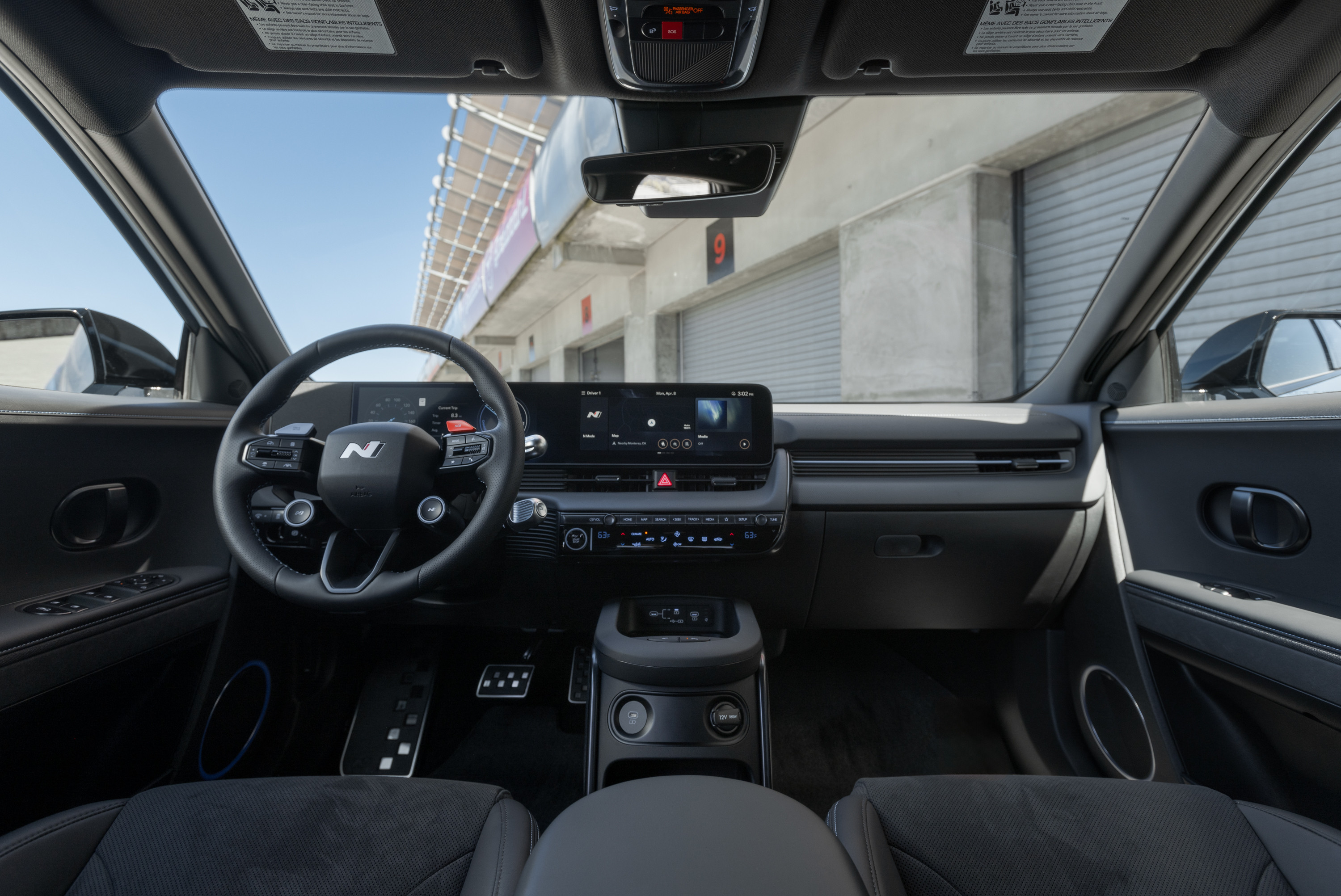
Hyundai Ioniq 5N interior
Is there a point to this? Probably not. It is fun – and remember, that sound isn’t nearly as loud outside the cabin as in. Hyundai describe it as a ‘more engaging and exciting sensory experience for the driver,’ but in truth it’s about recapturing the qualities that many diehard ICE fans feel they have lost with the EV transition.
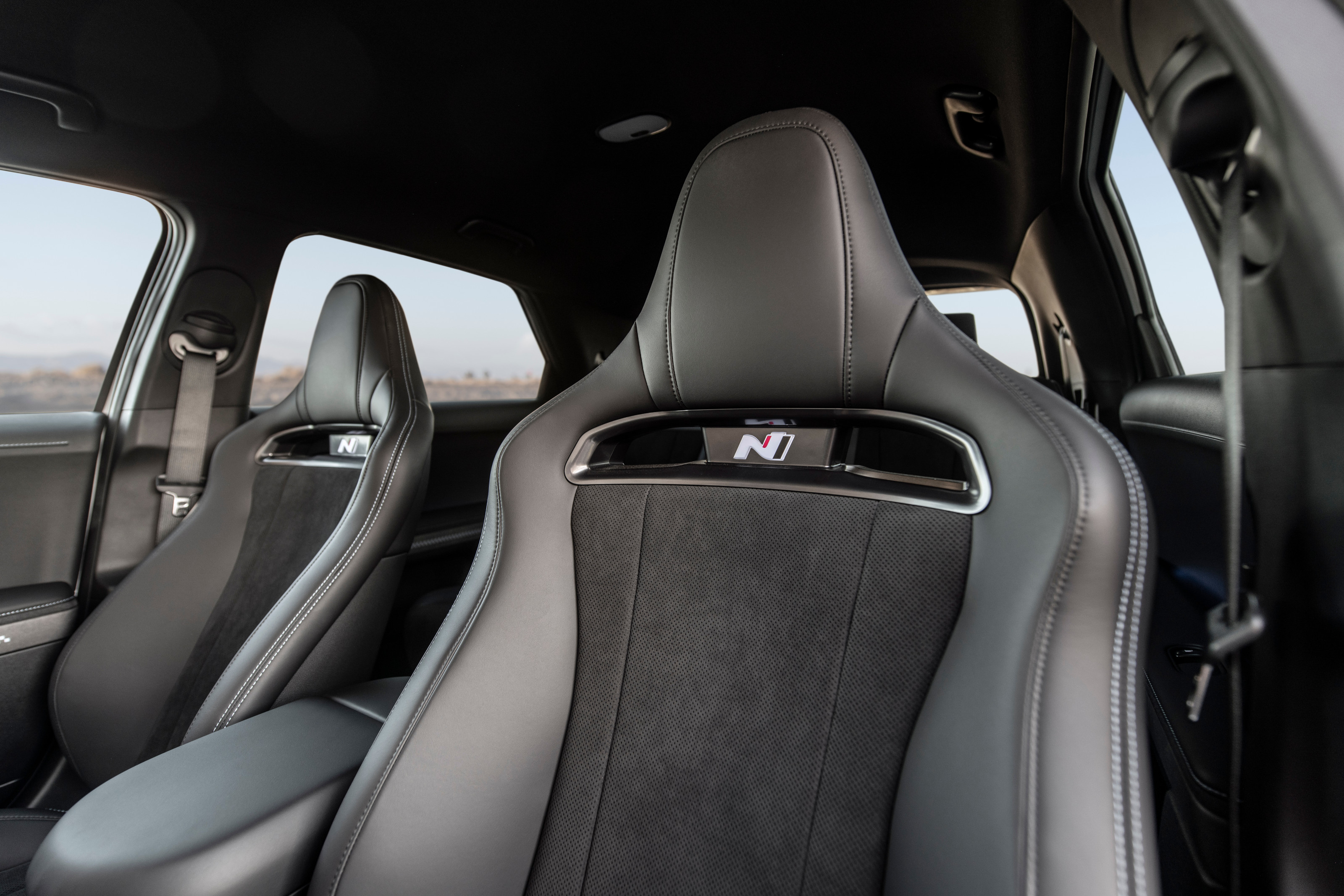
Hyundai Ioniq 5N sports seats
For all its trickery, N Active Sound+ sounds quite convincing, piped through the car’s 10-speaker audio system. You have a choice of no less than three themes, variously emulating an earlier 2.0 litre turbocharged Hyundai engine, a special ‘signature high-performance sound’ and a ‘Supersonic’ theme which takes its cue from fighter jets and sci-fi.
There’s no debating the quality and depth of performance on offer. Tweaks to throttle and torque distribution allow the more experienced to drift with ease (not tested), as well improve cornering by ramping up the regenerative braking.
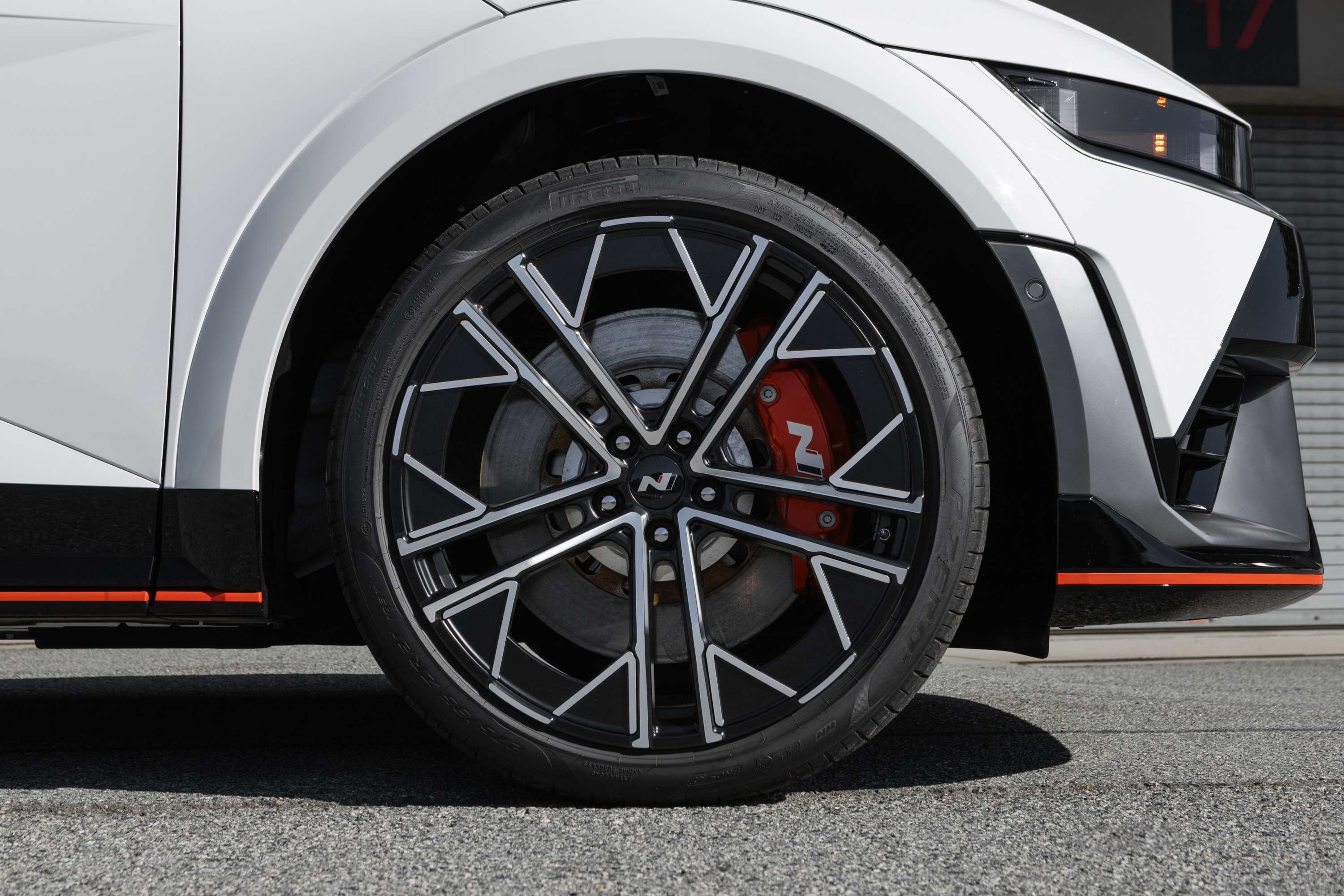
Hyundai Ioniq 5N
I can’t help but feel that all these technical tricks are missing the point of e-performance, amplifying lairy character traits like noise and drama at the expense of the EV’s great advantages of silence and refinement. It’s not as if there aren’t copious numbers of petrol-loving manufacturers out there hellbent on pushing legislative deadlines further to the horizon. Do sporting EVs really have to compete in a similar way?
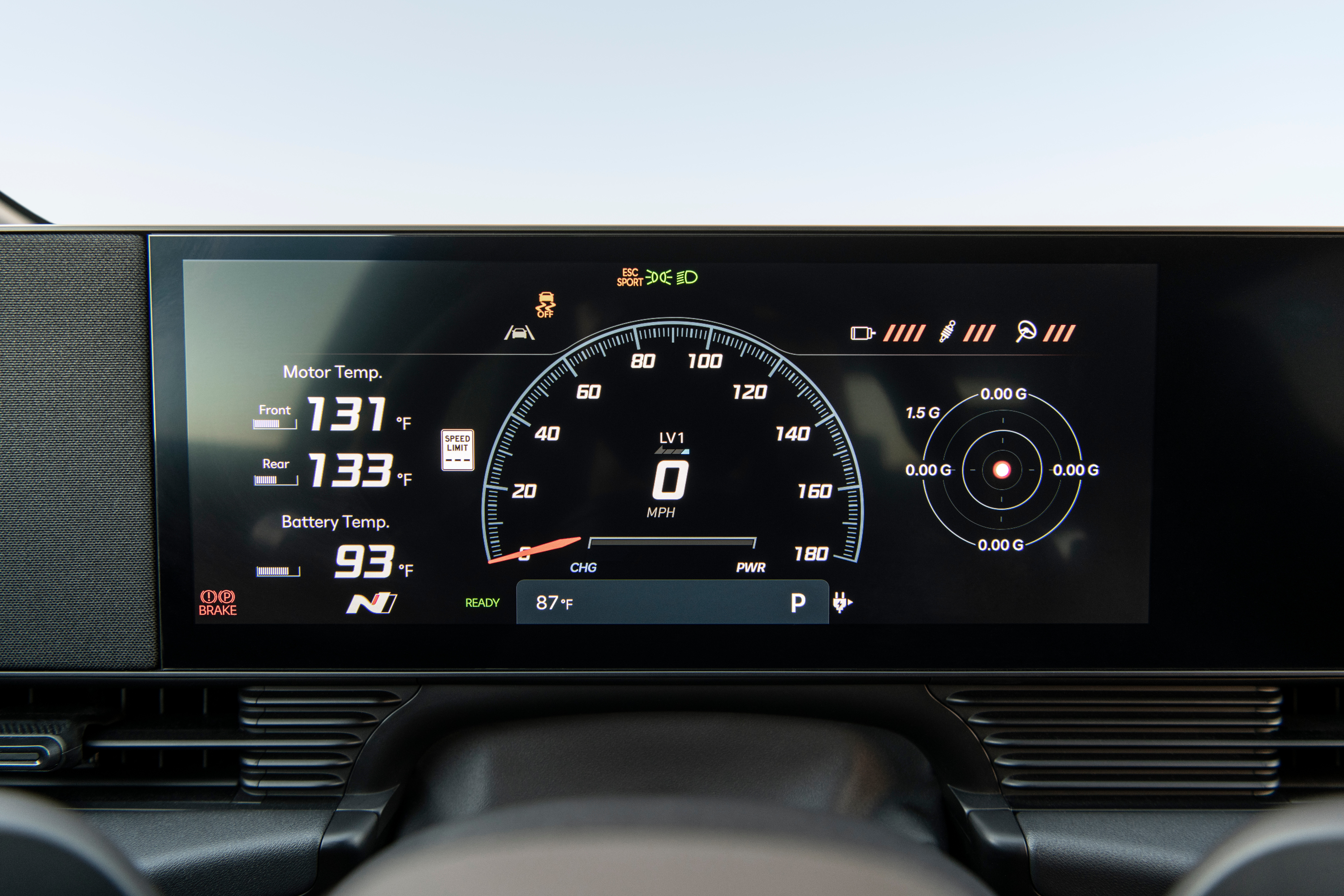
Hyundai Ioniq 5N dashboard
That’s not to say the 5N isn’t a lot of fun to drive. It’s still a fine-looking car, wearing its quirky blend of modernity and retro well. And while smashing through the gears makes for a more dynamic experience than the smooth, silent and relentless acceleration of a regular EV, it’s an experience best kept to the racetrack. It certainly doesn’t impress passengers, especially when you’re diving hard into corners.
Ultra-fast charging makes up for a slightly sub-standard 278-mile range, but if you make too many regular dips into the cheesy-sounding ‘N Grin Boost’ setting, expect that to swiftly plummet. The novelty of 3.4 second 62mph sprints only lasts for so long.
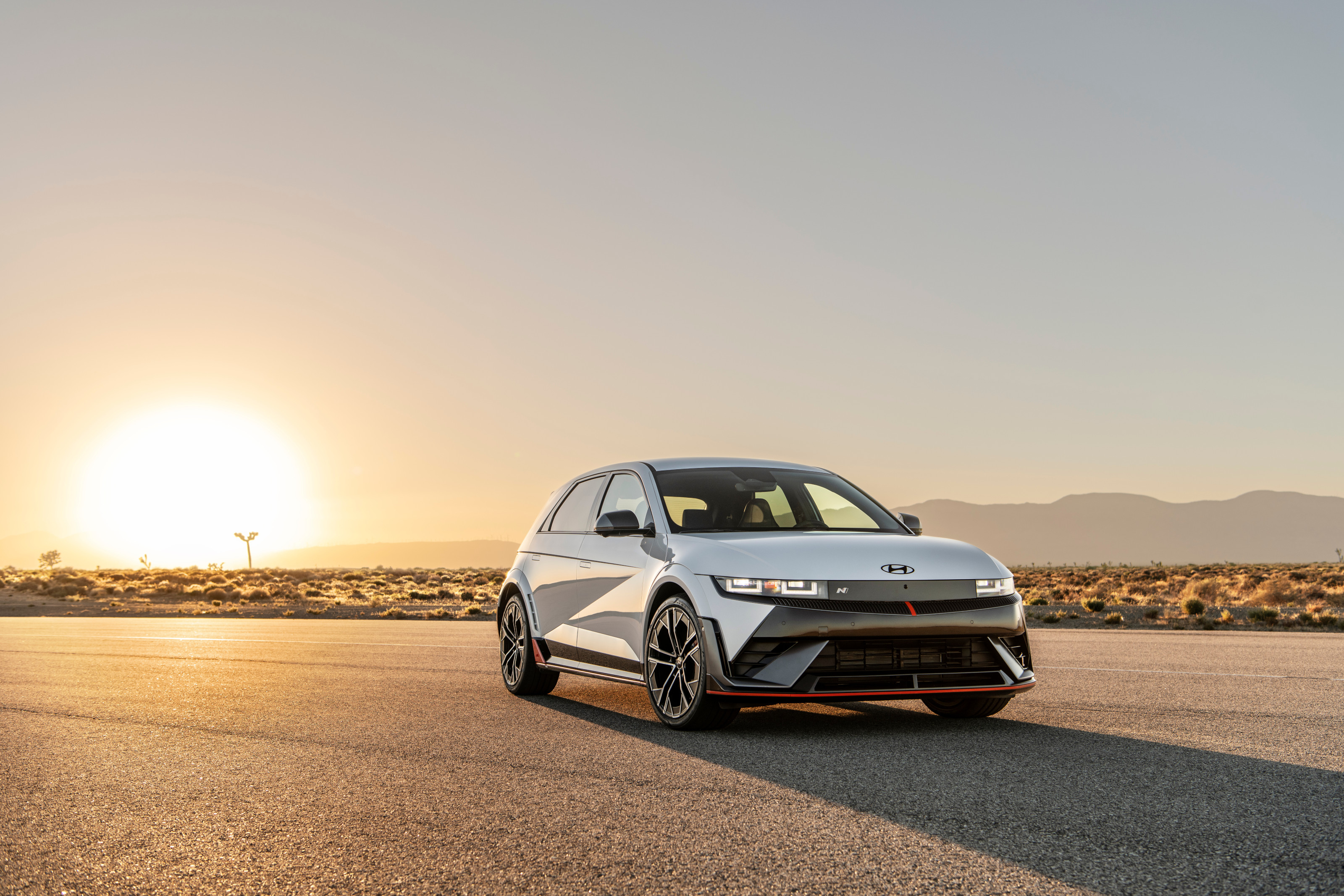
Hyundai
Hyundai has raised its game to become one of the world’s top tier EV makers, and it’s great that a volume manufacturer is being so brave and innovative. I imagine that engineers from all the heritage sports car brands have quietly borrowed an Ioniq 5N or two and given it a thorough going-over, trying to work out if it’s a path they’ll want to take.
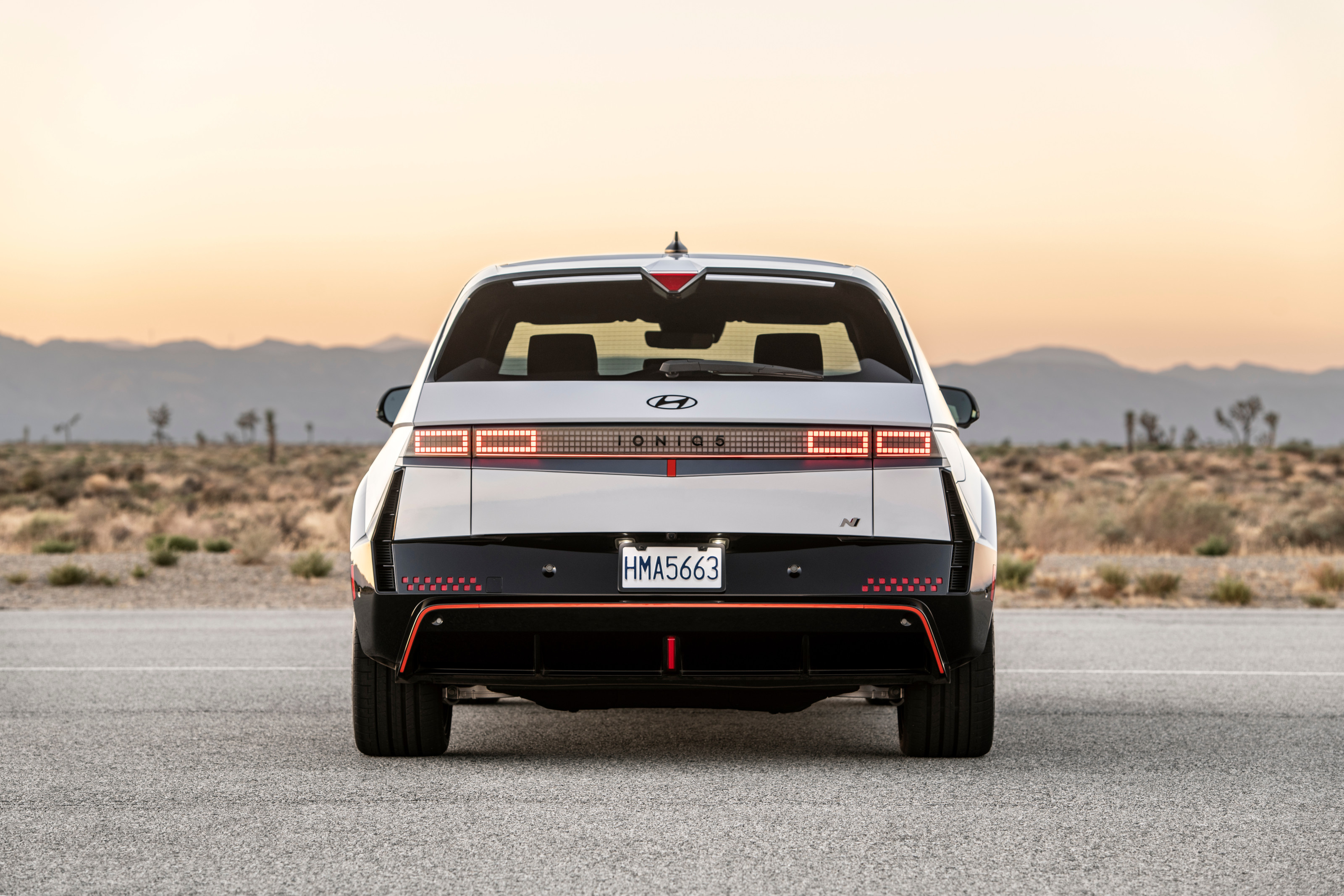
Hyundai Ioniq 5N
So what’s next? This year at Goodwood, Hyundai debuted the Ioniq 6N, the next stage in the company’s electric performance journey. Expect more of the same, which indicates that even if the new generation Hyundai ‘N’ series don’t sell in their thousands, the company sees the benefit in keeping them around on the off-chance they'll win over the EV doubters.
Hyundai Ioniq 5N, from £65,010, Hyundai.com
Jonathan Bell has written for Wallpaper* magazine since 1999, covering everything from architecture and transport design to books, tech and graphic design. He is now the magazine’s Transport and Technology Editor. Jonathan has written and edited 15 books, including Concept Car Design, 21st Century House, and The New Modern House. He is also the host of Wallpaper’s first podcast.
-
 Bottega for Bottegas 2025 invites artisans to reinterpret the ritual of the aperitivo
Bottega for Bottegas 2025 invites artisans to reinterpret the ritual of the aperitivoThe annual initiative showcases makers and creatives who share Bottega Veneta’s dedication to craft. This year’s objects come together as an exquisite, modern still life
-
 Caligra launches its c100 Developer Terminal, a stripped-back machine for serious computing
Caligra launches its c100 Developer Terminal, a stripped-back machine for serious computingPentagram’s Jon Marshall has collaborated with computing start-up Caligra to shape its sleek but serious desktop and mouse
-
 A 1970s brutalist icon becomes Tbilisi’s most striking new hotel
A 1970s brutalist icon becomes Tbilisi’s most striking new hotelNeri&Hu transforms a Soviet-era post office into the Georgian capital’s anticipated Telegraph Hotel
-
 The future of off-road is encapsulated in Hyundai’s rugged Crater Concept
The future of off-road is encapsulated in Hyundai’s rugged Crater ConceptAn exploration of the future form of Hyundai’s XRT sub-brand, the Crater Concept is designed to roam where no one else goes
-
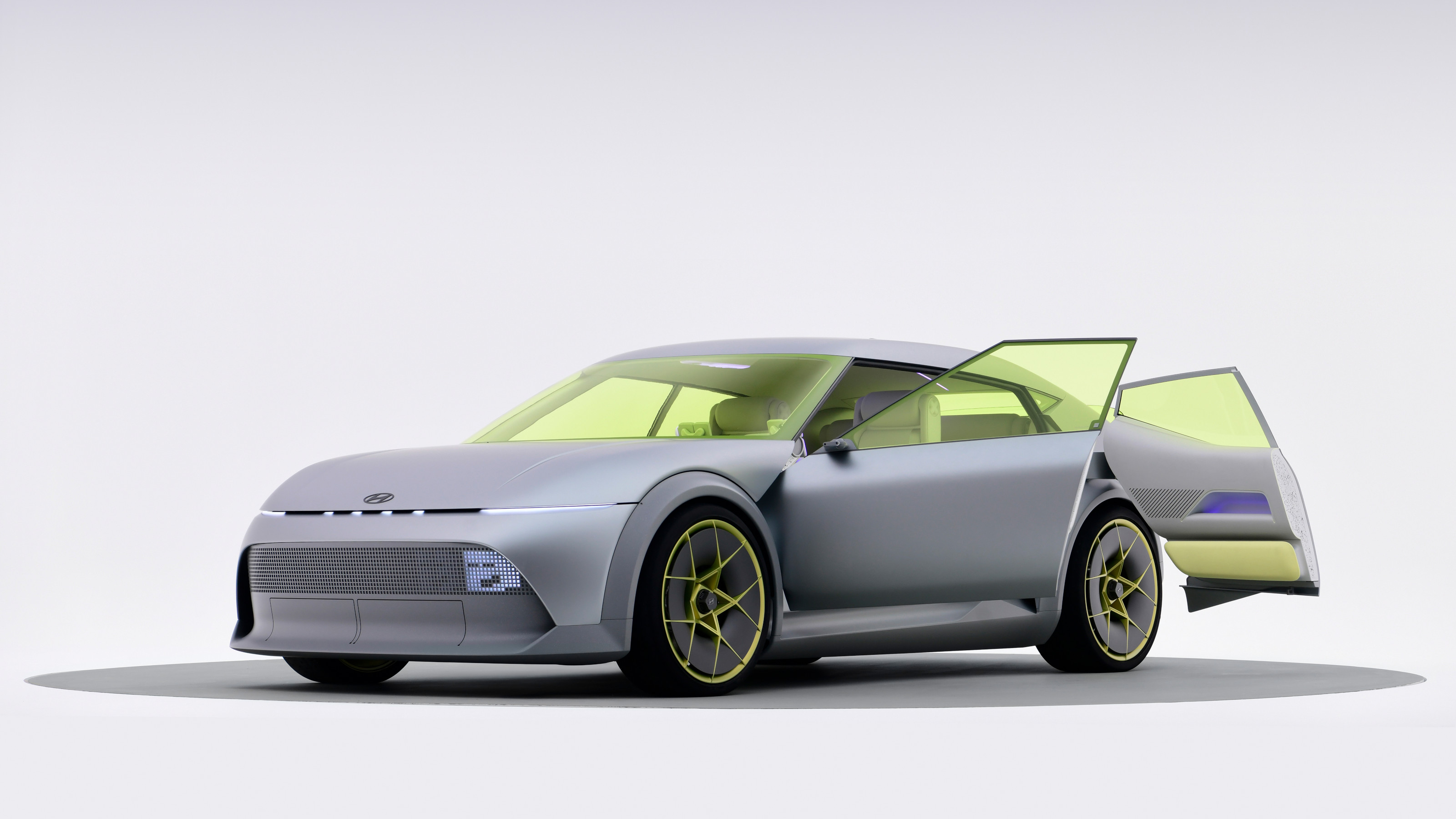 All the new electric cars and concepts revealed at Munich’s IAA Mobility 2025
All the new electric cars and concepts revealed at Munich’s IAA Mobility 2025Munich’s alternative motorshow is now in its third iteration, combining a traditional exhibition space with a conference and large-scale public activations on the streets of the city
-
 An instant modern classic, the new Hyundai Inster is an all-conquering, all-electric city car
An instant modern classic, the new Hyundai Inster is an all-conquering, all-electric city carSmall EVs are making big waves as the tech continues to evolve. Hyundai shows everyone else how to do it
-
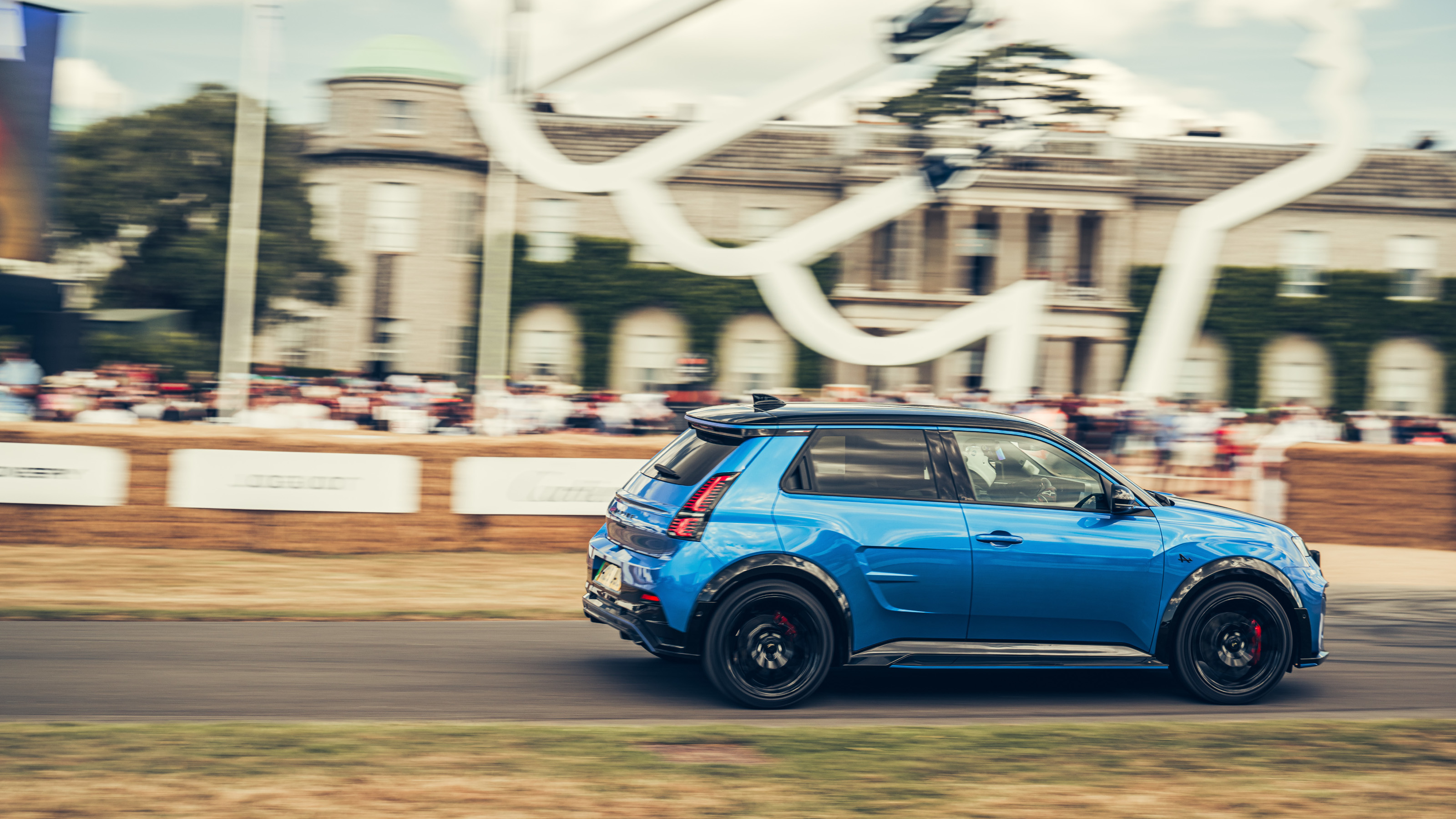 All the best bits from Goodwood Festival of Speed 2025
All the best bits from Goodwood Festival of Speed 2025As car makers switch their allegiance to the sunny West Sussex countryside as a place to showcase their wares, a new generation of sports cars were sent running up that famous hill
-
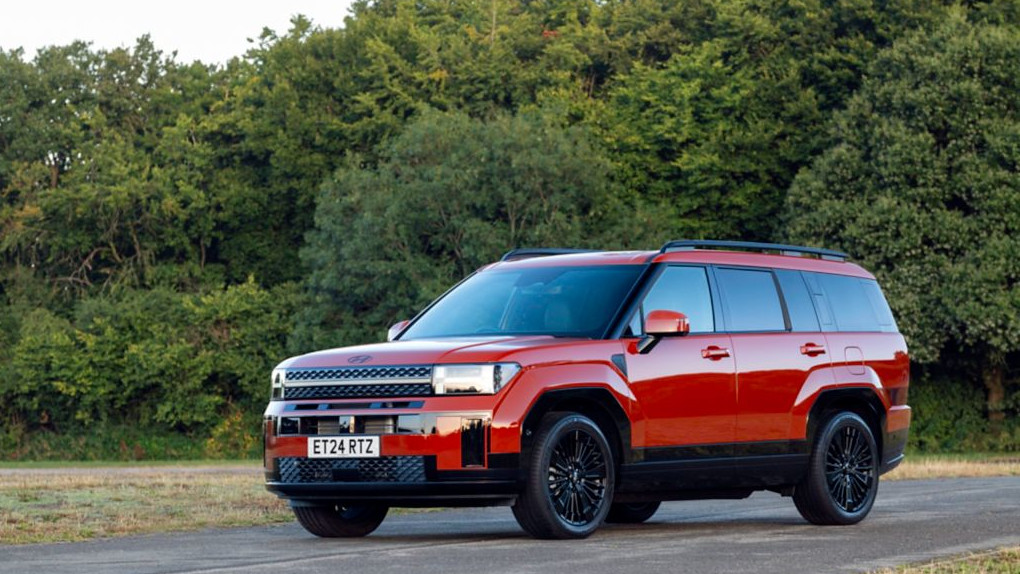 Comfort, kit and enduring aesthetics make the Hyundai Santa Fe utilitarian and upmarket
Comfort, kit and enduring aesthetics make the Hyundai Santa Fe utilitarian and upmarketTough looks conceal premium features as Hyundai takes its plug-in hybrid SUV upmarket. Wallpaper* tries out the stylish new South Korean 7-seater
-
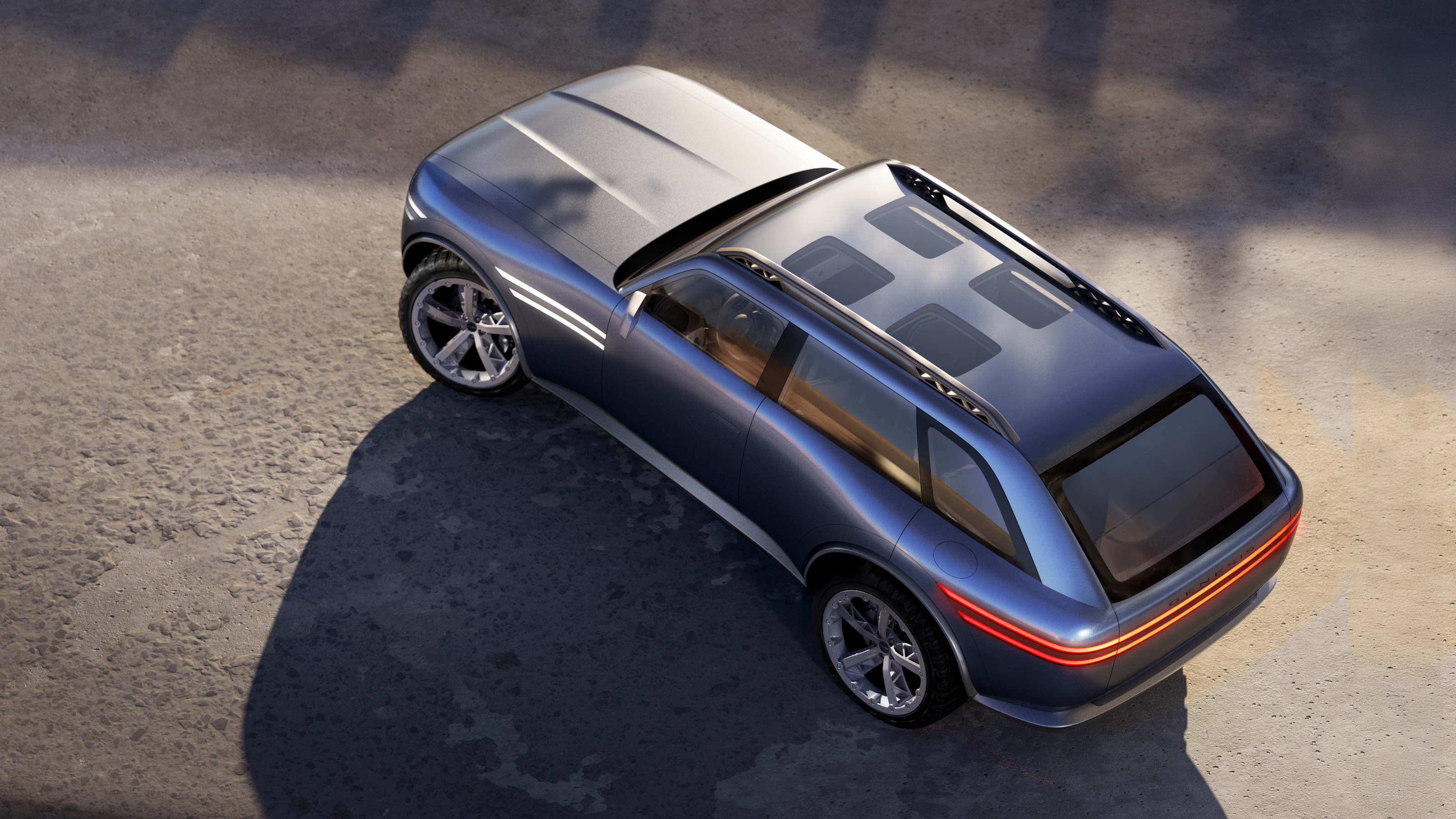 Our pick of the reveals at the 2025 New York Auto Show, from concept SUVs to new EVs
Our pick of the reveals at the 2025 New York Auto Show, from concept SUVs to new EVsInterest in overseas brands remained strong at this year’s NY Auto Show despite the threat of tariffs designed to boost American-owned brands
-
 2025 Seoul Mobility Show report: all that's new and notable
2025 Seoul Mobility Show report: all that's new and notableOpened at a time of high national drama, the 2025 Seoul Mobility Show has gone on to underscore Korea’s place at the cutting edge of the auto industry. Guy Bird was there
-
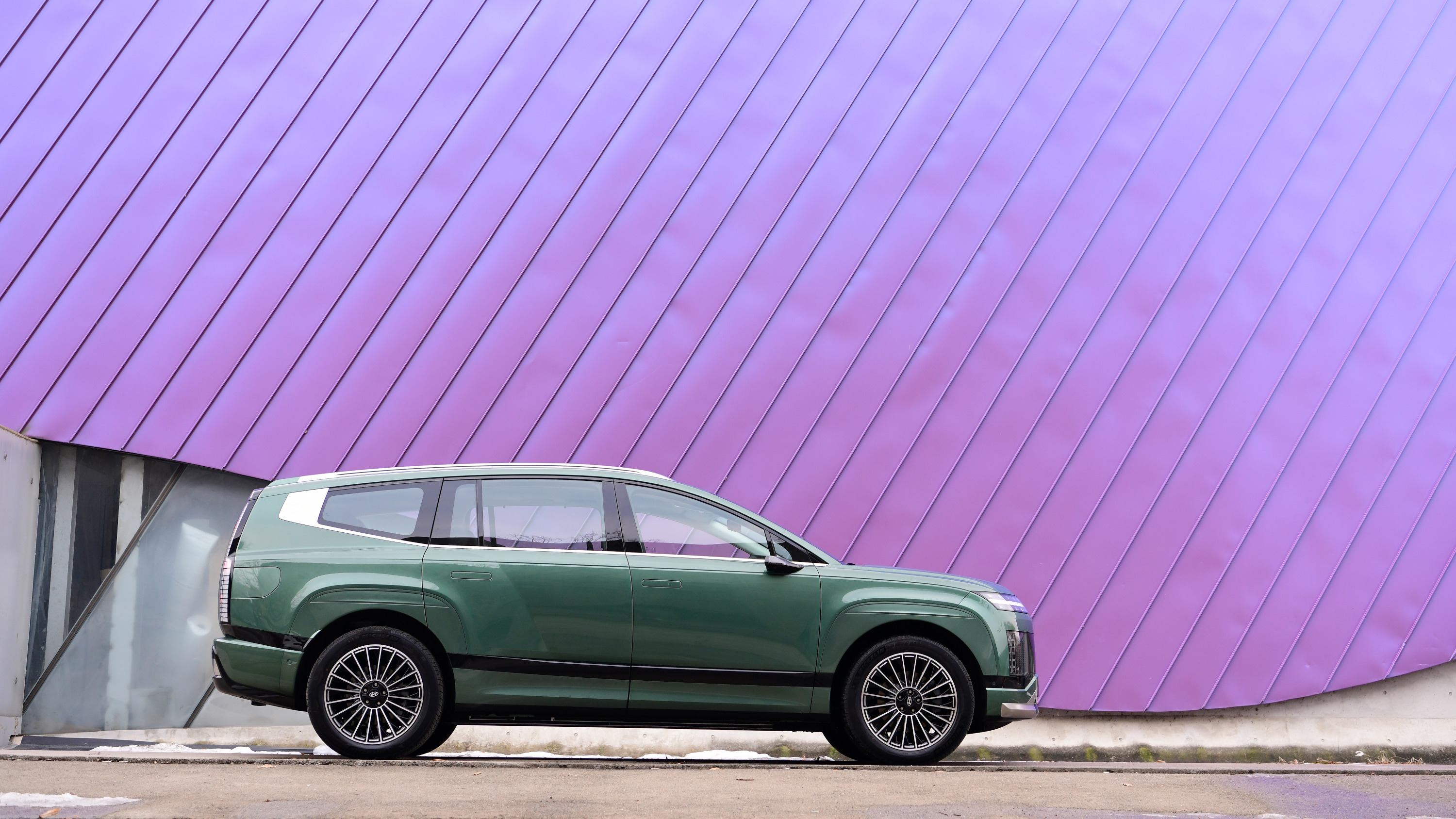 Long-range, refined and spacious, the new Hyundai Ioniq 9 is like a private jet on wheels
Long-range, refined and spacious, the new Hyundai Ioniq 9 is like a private jet on wheelsWallpaper* takes the Ioniq 9 on an electric road trip from Seoul to Busan to explore Hyundai’s newest and largest EV to date